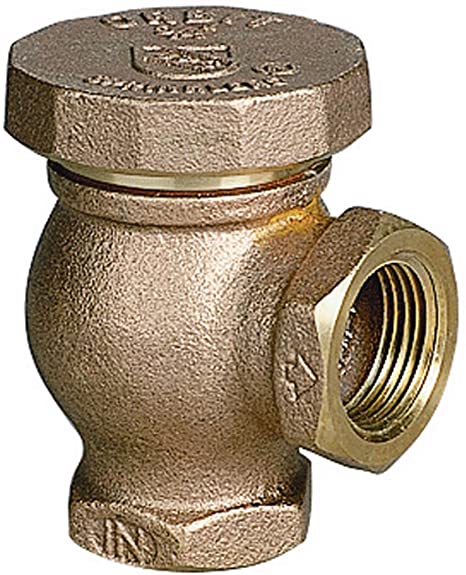All You need to know about Atmospheric Vacuum Breaker (AVB)
What is Atmospheric Vacuum Breaker (AVB)
The atmospheric vacuum breaker, or AVB, is a backflow prevention device used in plumbing to prevent the backflow of non-potable liquids into the drinking water system. AVBs comprise of an air inlet port, a check seat, and an air inlet valve. Back-siphonage occurs when the system pressure drops, thereby forcing the pressure to become high to make up for the difference. When the pressure in the potable water system drops, it is possible that non-potable outflow can backflow into the system. This is where AVB is used to prevent the process of back-siphonage.
How does it work?
When back-siphonage occurs in a potable water system, an AVB fills up the vacuum. It has a close resemblance to a ninety-degree elbow in its structure and has a hood on the top that has an opening to allow air to enter into the system. This hood is operated by the pressure in the poppet valve found inside the elbow of the AVB assembly which keeps it held up. If the pressure inside the system drops, to compensate for the pressure loss, the poppet valve pressure drops as well. Due to this, the hood is raised and the air is sucked into the pipe and is filled with a vacuum before the back- siphonage can occur. In simple words, the pressure is neutralized by the air which thereby creates a buffer between the potable water supply system and the contaminated water.
Features of AVB
AVBs are not designed for protection against backpressure. It is generally used for the internal level of protection, both in outdoor as well as indoor applications. It uses air and thus AVBs cannot be placed in a contaminated environment as the polluted air can enter into the plumbing system and contaminate the potable water supply. In the system architecture, it must be installed at a raised point since if it is operated underground –it may suck in the groundwater and causing contamination. It must be installed 6 inches above the highest outlet in the zone. They cannot be used with chemigation. They must be installed vertically with the bonnet on the upper portion and downstream from zone control valves.

How is it different than other Backflow Preventers?
The AVB is a non-testable backflow preventer, unlike PVB which is capable of being tested. It has a gravity opening poppet air space that is specifically designed for allowing the air to enter from the atmosphere via downstream sides of the unit. Both AVB and PVB are used only for back-siphonage, however, their applications differ. PVB is typically used in lawn sprinkler systems and has independent acting spring-loaded air inlet valves. On the other hand, AVB is typically installed by the manufacturer or contractor installer only on certain equipment that uses potable water such as faucets, deep sinks, soap dispensers, dishwashers, etc.
Why choose AVB for Backflow Prevention?
The AVB assembly is one of the most inexpensive and simple types of backflow preventers. Due to
its simplicity, this assembly is easy to install, maintain, and repair. AVBs have shut-off valves in
immediate upstream of the potable water system which can be considered as an advantageous
component of the assembly. AVBs can protect against both high and low hazard applications only in
the case of back-siphonage issues.
We use AVB devices that meet the requirements laid out by the American Water Works Association
(AWWA) Standard for Atmospheric Pressure Vacuum Assembly (ASME A112.1.3) and approved by
labs sanctioned by the Conference of State Sanitary Engineers.
At smart water backflow, we offer water backflow services, installation, maintenance, repair services
to help solve all your backflow problems. We are available 24x7 to serve you. Call us now!
